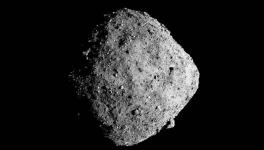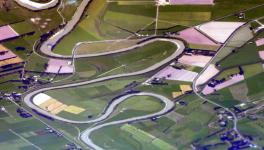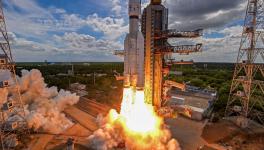China’s Chang’e 5 Returns with Lunar Samples, NASA’s ‘InSight’ into MARS’ Interior
Less than a month after its launch, China’s Chang’e-5 moon mission has returned with precious cargo: the first lunar samples in decades. The return capsule of the Chang’e-5 mission landed in inner Mongolia with samples collected from the surface of the moon. According to CGTN, the Chinese broadcaster, the return capsule parachuted back to Earth at about 10 pm on December 16.
The Chang’e-5 mission has become the first mission to collect lunar samples and bring them back to the Earth in over 40 years. The mission involved robotic drilling into the lunar surface to procure the sample, an operation no seen in previous instances. Chang’e-5 landed on the lunar site known as Mons Rumker and collected two kilograms of lunar samples.
The samples are said to be billions of years younger than the samples collected previously and are expected to shed new light on the evolution of the solar system.
At the same time, NASA’s InSight Mission, which aims to probe the interior of Mars, may provide important clues. The InSight mission landed on Mars in November, 2018 near the equator of the planet on a smooth plain called the Elysium Planitia. With seismometers in place, the mission has so far recorded 480 marsquakes. Mars is found to be lesser active seismologically than the Earth, but more than the moon.
Seismologists uses earthquake data to decipher the interior structure of the planet. Similarly, they are using marsquake data to find out how what Mars looks like from the inside. Seismic data consists of two types of waves, and by measuring the difference between the movement of these waves, researchers estimate the core, mantle and crust of the planet—where they begin, where they end and how thick they are. These are crucial bits of information about how a planet was formed over billions of years.
Earlier, the surfaces of Earth and Mars were said to be similar, with characteristics a warm, wet and thick atmosphere. But, between three to four billion years ago, the two planets went their separate ways. The InSight mission intended to compare the Earth with Mars and find out what the latter’s interior was made up of.
The Earth’s crust is layered, with different rock types making up each layer. Similarly, scientists thought that Mars’ crust also had a layered architecture, but did not know that for sure. According to a Nature report, InSight data showed that it is made up of either two or three layers.
Whether the crust is a two layered or a three-layered entity, it should be either 20 or 37 kilometers thick, said Brigitte Knapmeyer-Endrun, a seismologist at the University of Cologne, in a prerecorded talk at the virtual American Geophysical Union meeting on December 15. She also said that while the thickness may vary depending upon where it is measured, it should not go beyond 70 kilometers on an average.
The Earth’s crust, on the other hand, has a thickness of between five to ten kilometers under the oceans and varies in the range of 40 to 50 kilometers in the areas below the continents.
Get the latest reports & analysis with people's perspective on Protests, movements & deep analytical videos, discussions of the current affairs in your Telegram app. Subscribe to NewsClick's Telegram channel & get Real-Time updates on stories, as they get published on our website.






















